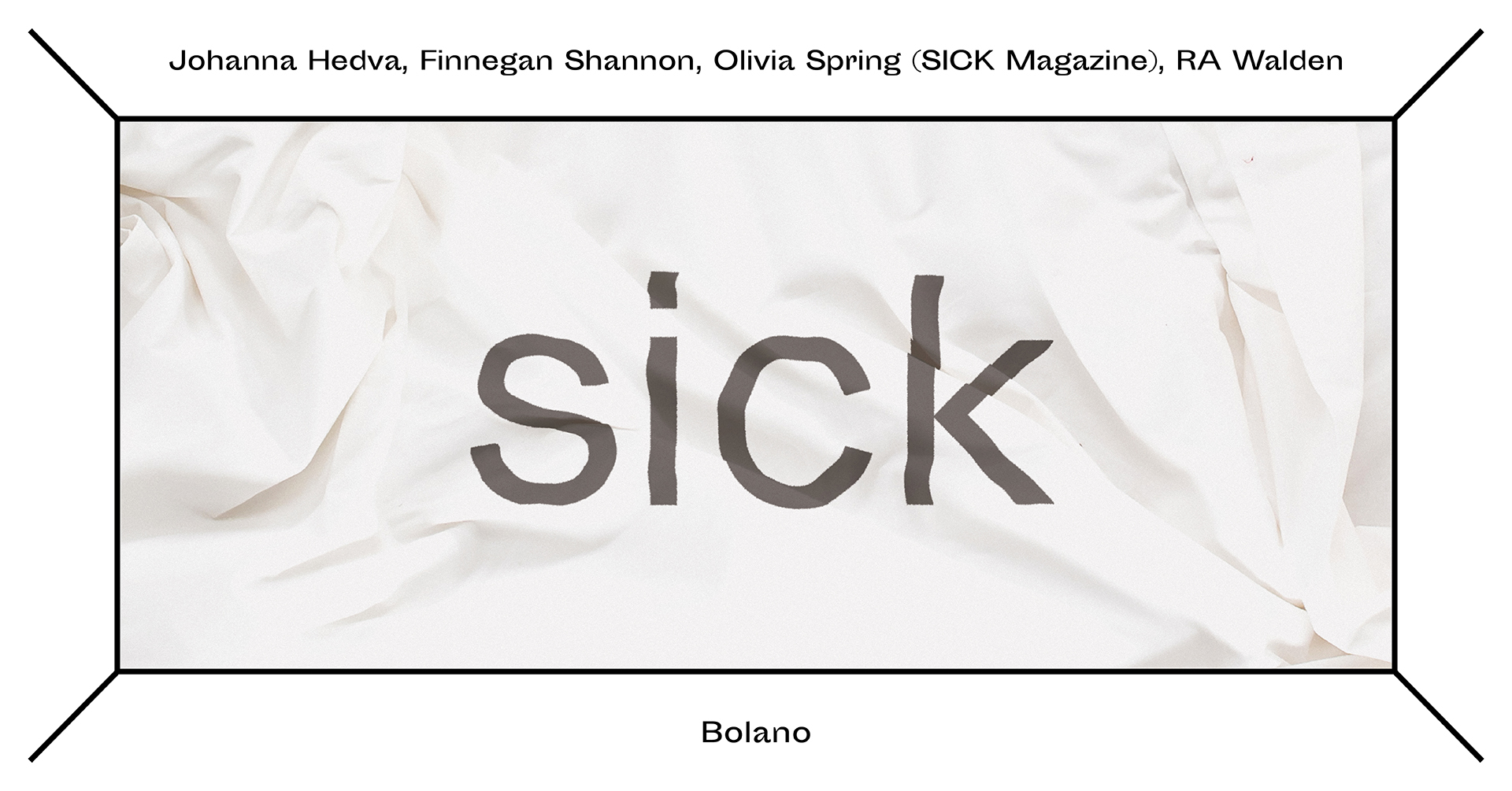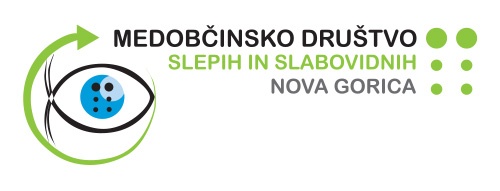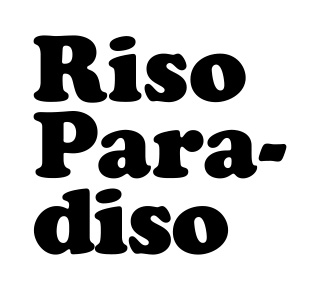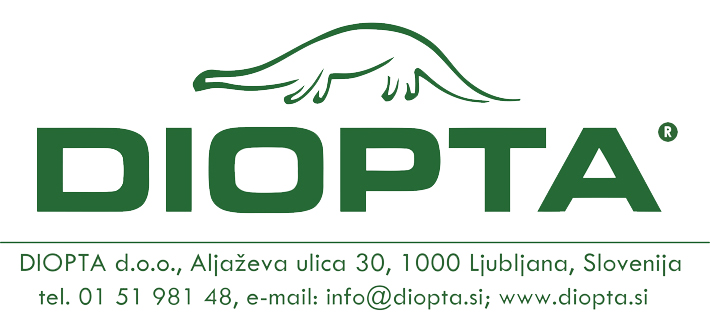The annual exhibition of the School for Curatorial Practices and Critical Writing World of Art
21 June – 18 July 2023, Škuc Gallery
Exhibition opening: Wednesday 21 June 2023, 7 pm
Artists: Johanna Hedva, Finnegan Shannon, Olivia Spring (SICK Magazine), RA Walden
Curators: Urška Aplinc, Lara Plavčak
Advisory role and assistance: Vesna Bukovec, participants of the 19th generation of the School for Curatorial Practices and Critical Writing World of Art Jernej Čuček Gerbec, Lin Gerkman, Lara Nagy, Isidora Todorić, Lara Zupan
ACCOMPANYING EVENTS
23 June at 6 pm: Viewing of the exhibition for people with blindness and visual impairments with teacher of people with visual impairments Peter Rot (Inter-Municipal Association of the Blind and Visually Impaired Nova Gorica) – in Slovenian.
29 June at 6 pm: Book presentation Your Love Is Not Good and conversation with the author Johanna Hedva – in English, accompanied by an interpreter for Slovenian sign language. Moderator: Suzana Tratnik. Co-organised by: Azil Bookstore (ZRC SAZU).
7 July at 6 pm: Viewing of the exhibition with the curators – in Slovenian, accompanied by an interpreter for Slovenian sign language.
13 July at 6 pm: Lecture by Amanda Cachia Contemporary Disability Art: Accessibility Aesthetics and Institutional Critique – in English, accompanied by an interpreter for Slovenian sign language, equipped with English subtitles. The lecture will take place via Zoom, registration at: info@scca-ljubljana.si.
18 July at 6 pm: Final viewing of the exhibition with the curators – in English.

Image description: Photo of a white crumpled bed sheet with the word sick written in grey lower-case letters. The inscription follows the folds of the sheet. The photo is surrounded by a frame made of a thin black line and a white border. In the upper border it says Johanna Hedva, Finnegan Shannon, Olivia Spring (SICK Magazine), RA Walden, and Bolano on the lower.
ABOUT THE EXHIBITION
The exhibition Sick features works by artists who identify as disabled and/or chronically ill and thus wishes to bring the experience of illness and disability,[1] often associated with the private, into the public sphere. The exhibition includes works by international artists Johanna Hedva, Finnegan Shannon and RA Walden, as well as a reading room curated by writer Olivia Spring. In their practice and artworks, the artists explore the lived experience of illness/disability as that nexus of class, race and gender that is usually overlooked in discussions of intersectionality[2] and political activism.[3]
_
It is unpleasant to think that we will all become sick or disabled at some point. Non-disabled[4] individuals and society collectively brush aside the thought of the inevitable, and at the same time also all those who are already facing it. The fear is not surprising, since capitalism equates the value of people with their productivity and the possibility of (ab)using their bodies for the purpose of capital. Meanwhile, it is pushing the disabled and the sick into poverty, and with the decline of social security, vulnerable groups are becoming even more invisible to the rest of society. Disability is a concept of the lived experience in an ableist[5] society and the individual’s embodiment, not medical diagnosis and legal definition.[6]
Embodiment in late capitalism is explored by RA Walden. In the work Crip Ecologies, the fragility of the body is tied to the fragility of our ecosystems. The installation archives the artist’s limited contact with nature, which is the result of their disability. Natural objects are preserved in alcohol in containers that resemble apothecary bottles. They seem mundane, even self-evident but are elevated as precious artefacts in the work. The booklet and video Notes From The Underlands form a performative text about the queer utopia of the disabled and the sick. By calling to action and reflecting on the relationship of people who are not-yet-disabled in relation to the community of the disabled and sick, they challenge the assumption that the body must be physically present (and non-disabled) in order to perform. Both works explore manifestations of care that go beyond binary understandings of non-disability and disability, sickness and health.
Johanna Hedva connects the practices of care with queer feminism, alternative knowledge systems and self-organisation. The Medusa and the Snail[7] is a material, an almost visceral investigation of corporeality interwoven with alternative knowledge, culture and ancestral knowledge, intuition and dreams. For the viewer, the claustrophobic installation provokes an awareness of their own body in space. The artist and writer in their practice also otherwise interweaves mysticism, rituals and themes related to sickness, disability, marginalisation and mutual care.
But care must also become the responsibility of institutions, including cultural ones. The working principles of contemporary art institutions rarely allow for the possibility of including people with disabilities/chronic illnesses, both artists and audiences. Ableist institutions, with their hyperproduction of projects, do not envisage operating on crip time.[8]. In an equal relationship between the artist and the institution (the individual within the institution), the artist’s access rider[9] can be an open dialogue of necessary and possible adjustments. The focus on accessibility, especially when seen as an intellectual and creative challenge, is transformative for the medium of the exhibition and the exhibition programme.
Artist Finnegan Shannon’s interventions create accessibility in physical and digital spaces. By placing benches with text as artworks in gallery spaces, they draw attention to the neglect of the basic physical needs of people with disabilities, while at the same time putting the solution into practice.[10] The seating offers visitors a place to rest and a chance to listen to their bodies. It also provides an opportunity to interact with other works – the bench For RA Walden’s Notes From Underlands is set up for viewing RA Walden’s video. Sitting becomes a gesture of protest and one of the incentives for public space to recognise the needs of different bodies, not just normative ones. The artist deals with the private experience of illness and disability in three works, embroidered tissue boxes in the shape of a house A little pleasure for you, a sofa A little softness for you and a bed A little comfort for you. With them, they recall experiences from the lives of disabled or sick individuals, connected to the home and the private, marked by pain and the need to take care of oneself and others. The tissues and their boxes are an object of consolation that invites us to reflect on our care roles and to accept our interdependence.
In the absence of care structures, online communities have formed on social networks to support, educate and bring together. Self-publishing activities are also part of these communities, above all (fan)zines as an important medium of expression and networking for groups that are not part of the dominant culture. For the exhibition, writer Olivia Spring, founder and editor of SICK Magazine, a magazine by disabled and sick authors, has compiled a selection of zines, magazines, poems, anthologies and books covering a range of perspectives on disability and illness. The reading room aims to shake the wilful ignorance of a society that does not acknowledge the experiences and needs of people with disabilities. The duty to raise awareness must be shared and not remain an additional burden borne exclusively by disabled and sick people.
With this exhibition, we seek to place accessibility at the heart of our practice, our working methodology and our exhibition programme. The exhibition presents the different perspectives of artists, art practitioners and communities that create a space to reflect on the issues and connections of disability, art and contemporary society, through which we aim to approach different exhibition strategies for work, connection and inclusion.
______
[1] In Slovenian, appropriate terms around “disability” are not yet fully embraced so words like “invalid” and “handicapped”, which are stigmatising, are still in circulation. We have therefore added the English original and an explanation to the Slovenian as clarification.
[2] See Kimberlé Crenshaw. Intersectionality explains the overlapping sociopolitical systems of power and inequality and the experiences of oppression (or privilege) of people at the axes of these systems.
[3] The political engagement of disabled people is addressed in the essay Sick Woman Theory by Johanna Hedva, in which the resistance of the sick/disabled body is considered.
[4] There is a shift away from the word “abled” in the English language. The term non-disabled indicates that an individual’s psychophysical non-disability is mostly temporary.
[5] Ableism is a system of discrimination and prejudice against people with disabilities. It can also be internalised.
[6] See the social model of disability within disability studies.
[7] The exhibition presents Wart Paintings, which are part of the artwork.
[8] Crip time, see Alison Kafer. It is a non-linear time (and space) experienced by disabled people. Crip comes from cripple, and the word is being reappropriated by some disabled people and groups as an act of empowerment and destigmatisation. The word is not suitable for use by non-disabled persons, except with express consent, if it refers to an individual or a specific group.
[9] A text about the needs of an individual artist for exhibition work, travel, accommodation, live events, etc.
[10] The adaptations, which are primarily designed for disabled people, also benefit non-disabled users. For example elevators and ramps for prams.
Visiting
Entry to the exhibition and all accompanying events is free of charge. Škuc Gallery is equipped with a ramp for persons with reduced mobility at the entrance (width 150 cm) and in the space (width 106 cm). The inner courtyard and the toilets of the gallery are not accessible to wheelchair users. Accessible toilets are available in the restaurant Druga Violina next door. Please contact the restaurant staff for assistance. The toilet in the gallery is gender-neutral. Free tap water is available. The reading room, which is part of the exhibition, has comfortable seats with backrests. The gallery is generally a quiet space and the sounds of the artworks are limited to headphones. The gallery is not equipped with a hearing loop. The exhibition text is available in Braille and in print for people with visual impairments (both in Slovenian). A magnifying glass is also available for people with visual impairments. As we want to make the visit to the exhibition safe also for people with compromised immune systems, we recommend the use of protective masks. Dogs are welcome. The staff can provide a bowl of water for them.
Arriving
The nearest bus stop to the gallery is Gornji trg (180 m), where bus lines 2, 3, 11, 19 and 27 stop. More information is available on the LPP website or by calling LPP (+386 1 582 2425, +386 51 449 992). Most buses are equipped with a ramp, but we still recommend that you call LPP to inquire about the accessibility of the bus during your time slot. The gallery is in the pedestrian zone in the centre of Ljubljana. The nearest driveway for cars is 50 m away. The streets in the immediate vicinity are paved. You can catch a ride with the free Kavalir vehicle service in the pedestrian zone, which can be ordered from 6 am to 10 pm by phone (open vehicles: +386 31 666 331, +386 31 666 332; closed vehicles: +386 31 666 299). Vehicles are not accessible for wheelchair users. The nearest payable car park with disabled parking (8) is NUK II. near Emonska cesta (500 m), the nearest disabled car park (1) for short-term parking is at Levstikov trg (100 m). For more information, contact JP LPT (+386 1 300 1200). A map of the accessibility of locations in the centre of Ljubljana and other useful information is also available on the website of the Slovenian Paraplegic Association.
COLOPHON
Organisers: World of Art/SCCA-Ljubljana, Škuc Gallery
Partners: Inter-Municipal Association of the Blind and Visually Impaired Nova Gorica, Riso Paradiso, Druga violina
The World of Art school programme is created in partnership with Cukrarna/MGML.
Slovene proofreading: Inge Pangos
English translation: Arven Šakti Kralj
Design and cover image: Lea Jelenko
Acknowledgements: Johannes Beck, Berliner Festspiele/Gropius Bau, Deborah Schamoni, Leandra Busch, Lenka Đorojević, Izidor Bratun, Kino Šiška
Supported by: Ministry of Culture of the Republic of Slovenia, City Municipality of Ljubljana – Department of Culture, ifa (Institut für Auslandsbeziehungen)
Sponsor: DIOPTA, d. o. o., Ljubljana
![]()
![]()
![]()


![]()
![]()
![]()


